The Human Side of AI Branding written by John Jantsch read more at Duct Tape Marketing
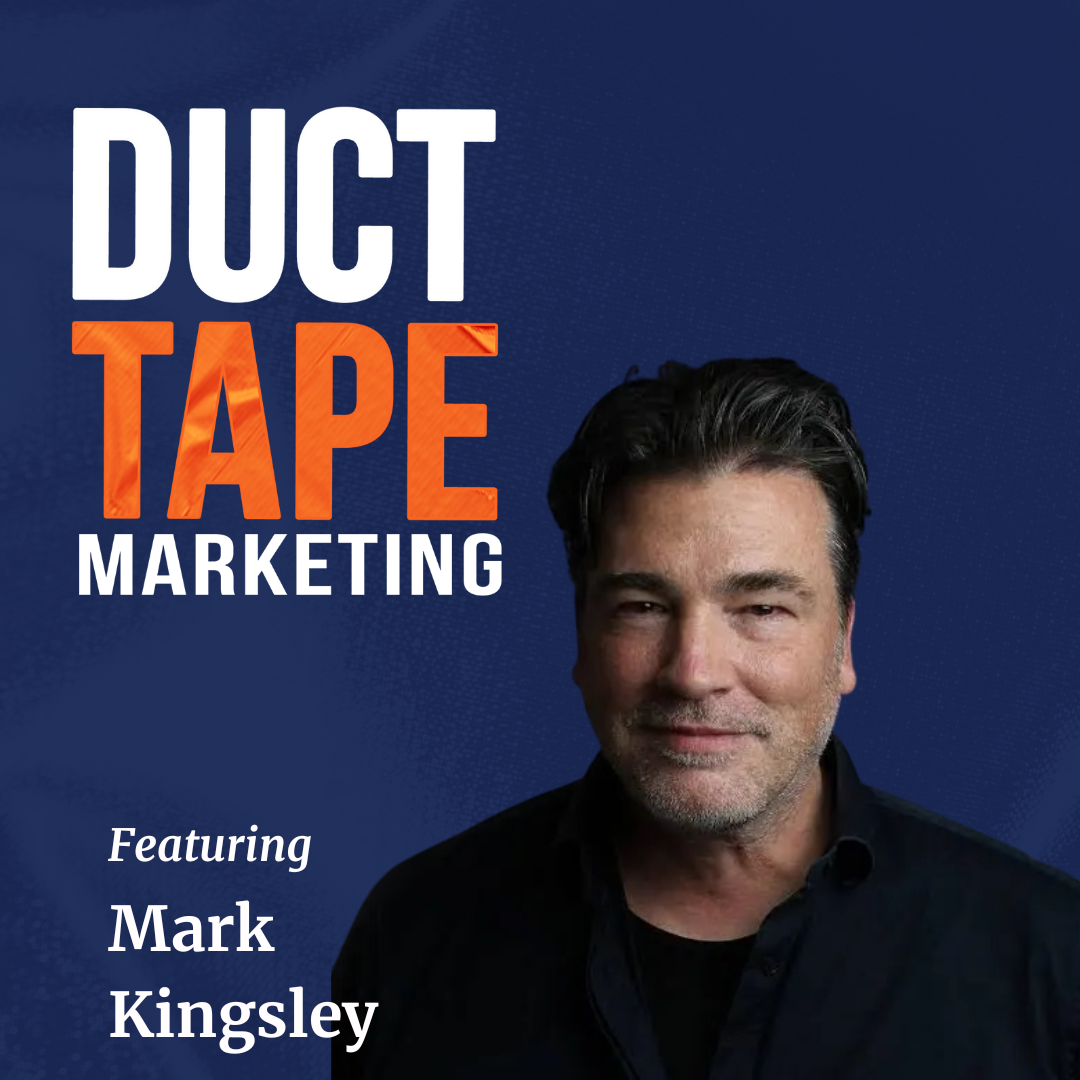 Overview
Overview
On this episode of the Duct Tape Marketing Podcast, John Jantsch interviews Mark Kingsley, renowned brand strategist, consultant, and author of “Brands in the Age of AI.” Mark shares how AI is reshaping the landscape of branding—putting pressure on brands to act ethically, think humanely, and redefine the meaning of differentiation, trust, and emotional connection. Mark and John discuss why algorithm-chasing alone leads to commoditization, how true brand value now lies in human insight, and the new risks and opportunities for companies of every size in an AI-driven world.
About the Guest
Mark Kingsley is a brand strategist, consultant, and author with deep expertise guiding global organizations through digital transformation. His latest book, “Brands in the Age of AI,” is a practical guide for leaders, marketers, and entrepreneurs navigating the new rules of branding, trust, and differentiation in an AI-powered landscape.
- Website: malcontent.com
- Book: Brands in the Age of AI
Actionable Insights
- AI is a force multiplier: It amplifies both good and bad brand behaviors, putting greater pressure on brands to act ethically and humanely.
- Don’t chase the algorithm—brands that focus only on efficiency and optimization become replaceable and lose emotional connection.
- Humanizing brands means moving beyond calculative thinking to contemplative, meditative thinking; focus on flourishing, not just transactions.
- Trust is at risk in the AI era: Brands must be transparent, consistent, and prioritize removing friction for the customer—not just for the company.
- The best AI-driven storytelling isn’t just a sequence of events—it creates moments of transformation, transcendence, and genuine recognition (“I see you”).
- Integration and database silos are a real challenge for delivering seamless, frictionless experiences; the future belongs to brands that can connect data and remove barriers.
- Small businesses can leverage AI to “level up” and deliver greater value, but must avoid eroding value through simple efficiency or automation.
- The real opportunity is delivering more human, more insightful, and more emotionally resonant experiences—AI should be a tool for that, not a replacement for it.
Great Moments (with Timestamps)
- 00:47 – Is AI Changing the Rules or Raising the Stakes?
Why AI is a force multiplier for both good and bad brand behavior. - 01:50 – Can AI Actually Humanize Brands?
Why contemplative thinking and ethical choices matter more than ever. - 04:54 – Trust, Technology, and the Pendulum of Progress
How brands can rebuild trust in an AI-driven world. - 06:56 – Don’t Chase the Algorithm
Why marketers focused only on optimization are the first to be replaced. - 09:12 – Storytelling, Recognition, and Transformation
Real-world examples of brands using AI to create “aha” moments. - 13:42 – The Brand AI Integration Model
How database integration (or the lack thereof) shapes brand experience. - 18:23 – The Human Skills That Matter Most Now
Why leadership, education, and redefined goals are critical in the age of AI. - 19:35 – Risks and Opportunities for Small Businesses
How small firms can use AI to punch above their weight (and where they must be careful). - 21:29 – Delivering More Value, Not Just Efficiency
How to thrive by focusing on insight, innovation, and customer outcome.
Insights
“If all you do is chase the algorithm, you’re replaceable by AI. Real brand value is in the human insight, not just the optimization.”
“AI is a force multiplier—it can help you deliver more human and more meaningful experiences, but only if you choose to use it that way.”
“Trust is built by removing friction for the customer, not just for the company.”
“Storytelling is about transformation and recognition, not just a series of events.”
“Small businesses can use AI to compete with the big players—but value comes from insight, not just automation.”
John Jantsch (00:01.08)
Hello and welcome to another episode of the Duct Tape Marketing Podcast. This is John Jantsch and my guest today is Mark Kingsley. He’s a renowned brand strategist, consultant and author with deep experience in guiding global organizations through digital transformation. His latest book we’re going to talk about today, Brands in the Age of AI. It’s an essential guide for leaders, marketers and entrepreneurs seeking to thrive in a landscape where AI is rapidly changing consumer expectations, brand trust and the
very nature frankly of that key brand element of differentiation. So Mark, welcome to the show.
Mark Kingsley (00:37.992)
Pleasure to be here. Thank you.
John Jantsch (00:40.076)
Let’s just let’s just hit it right off the bat. How is AI changing the fundamental rules of branding, if you will?
Mark Kingsley (00:47.55)
Does it change the rules or does it put a more pressure on people’s behavior? It puts more pressure on what I would, know, ethically I would call like better behavior. Because AI does multiply. It’s a force multiplier for the ability to extract more attention and to extract more profit from brands and transactions to extract more attention and etc.
But I see it also as an opportunity to, in the book I speak about like connecting with the I thou connection, me I and you thou and seeing each other with open eyes, seeing the other person as a person, not as a target, as a member of an audience or a potential transaction. And AI does.
offer these opportunities. It just comes down to like what is the choice that people are going to
John Jantsch (01:50.602)
We’ll say a little more about that because I mean, you’re talking about it as a force to actually humanize some marketing and there certainly are people that are saying just suggesting just the opposite. It’s turning marketing into a more robotic exercise.
Mark Kingsley (01:56.211)
Yes.
Mark Kingsley (02:00.766)
Mm-hmm.
Mark Kingsley (02:05.756)
Yeah, well, it’s very easy. In the beginning of the book, I talk about the way in which I’m approaching it. And I do it differently than most other people that speak about AI. Like if you go to LinkedIn, there were volumes and volumes of gibberish every day about the best prompts and how this company is going to market cap, blah, blah, you know, all that stuff. That’s what I call calculative thinking. And that’s basically figuring out how am I going to get from here to there. It’s logistics, right?
John Jantsch (02:22.498)
Right, right.
Mark Kingsley (02:35.742)
And I’m proposing that we also enter it’s also an opportunity for us to enter into what I call a more contemplative or meditative thinking which is I am I am going to consider the way that AI is going to impact my relationship and our relationship to each other to time to history to Society to knowledge all of that and so that this is it’s more of like an inflection point It’s very easy. We are rewarded
for good calculative thinking. We are rewarded with year-end bonuses. Name any domain, any kind of industry, you’re rewarded for returns. But that only goes so far. mean, aren’t we on this planet? Don’t we offer products and services in such a way to encourage the flourishing of human beings? One would hope.
John Jantsch (03:31.918)
Sorry to chuckle there, but I had forgotten all about that.
Mark Kingsley (03:36.486)
That’s the thing. It’s easy to forget, right? Because we get caught up in our professionalism. We get caught up in our engagement. We get caught up in results. And those are things that we can track. How does one track an emotional… mean, brands in theory, everyone that works in branding talks about brands making an emotional connection to people. So that’s hard to track. That’s hard to rationalize on a spreadsheet at the end of the day. And that’s hard. So it’s…
I know that I am shouting in the wind. I know that, right? But, you know, at least someone is doing that. It’s I’m like the, you know, the classic myth of the little boy in the dyke and trying to keep his finger in the dyke trying to keep the sea at bay.
John Jantsch (04:25.304)
Well, it’s interesting because, you know, I’ve been doing this for 30 some years. And I mean, I’ve seen a lot of new technologies come along and you see this huge, you see this huge swing towards what, what the promise of this technology is. And then inevitably you see the swing back to like, here’s how it failed us. So one of the most important words, I think you talked about emotional connection, but certainly trust is a huge part of that. So what role does AI play in
Mark Kingsley (04:51.133)
You
John Jantsch (04:54.19)
enhancing trust as opposed to eroding it. You know, you hear people saying all the time now, one of the negatives about AI is I don’t know what to trust because am I seeing something that’s real or not? So I think there’s going to be this swing both ways to like not trusting and then how do we get back to humanizing the emotional connection?
Mark Kingsley (05:15.729)
This is humanity’s relationship to technology in general, regardless of whether it’s AI or it be computers. could be the… I was just gonna say that, exactly, right? So we all rush to new technological innovations and advancements, and we see the benefits that it’s going to bring us, but technology is never positive or negative. It’s kind of like a neutral thing. What technology does, and this is a…
John Jantsch (05:20.386)
Yeah. Or automobiles. Yeah.
Mark Kingsley (05:44.766)
this is an idea that comes out of Heidegger, is that it reframes our relationship to things. For example, the technology of taking sawdust, mixing it with glue and coming up with medium density fiberboard, right? That gives us Billy bookcases. And it’s amazing that we can kind of use this material that was once considered to be, know, detritus, we can now use it for an actual building material and make money with this, right? What that does is that
There are forests in Romania that have been decimated just to build Billy bookcases, just to make sawdust for the Billy bookcases. So that’s what I mean about the constant reframing that technology does in our society.
John Jantsch (06:23.502)
Yeah.
So one of the things that I hear a lot of people talking about is sometimes marketers are just responding to what the algorithms give them, right? You have to do X, Y, and Z if you’re going to show up in AI overviews. And so you see a lot of people just chasing the algorithms that really truthfully are making decisions, in some cases, for our customers. So how do you kind of fight that no, let’s be human to no, let’s chase algorithms?
Mark Kingsley (06:56.889)
If that’s all you’re going to do as a marketing person is chase algorithms, you are replaceable. You are replaceable by AI. And so it’s it’s it’s short sightedness to even to even think that way. I mean, in the book I describe and it’s a it’s a constant example that people use if you look at lawyers. Right. And the education and training of a lawyer is you become you go through law school and then you become a junior partner and you sit there all night long going through paper and going through cases, reading cases.
and looking for ways in to a case or some sort of insight. That is you learning how to be a lawyer, right? But we can now offshore that work to AI and have AI go through and do this analysis. But what we’re doing is we are basically robbing the future. We are robbing new generations of lawyers. So how do we now educate a lawyer? it’s even in marketing, there’s
There has to be some sort of constant readjustment, resetting about how does one learn how to be a marketer, how does one act as a marketer, how does one kind of identify good marketing techniques.
John Jantsch (07:57.998)
Thank
John Jantsch (08:07.598)
Yeah. A phrase just popped into my head. know, know, the first kill all the lawyers, which was part of a much larger phrase, but, but I think it’s now first kill all the paralegals. that.
Mark Kingsley (08:16.477)
Yeah.
Mark Kingsley (08:23.325)
No, I would you know, I I you know, I’m much more cynical than you are I say first let’s kill all the mid-level marketing managers
John Jantsch (08:30.606)
Right. So if chasing algorithm, and I’ve totally agree with that. mean, the people that are just looking to like find efficiencies and things like that with AI are essentially almost playing right into the hands of being replaced themselves. Right. So in branding, I think we’ve said this way before AI way before, frankly, anything digital came along storytelling is the one of the key, you know, the key assets. So
Mark Kingsley (08:47.057)
Right, right.
John Jantsch (09:00.472)
Do you have some examples? know you do in the book, plenty of examples, but give us an example of a brand that you think gets storytelling that’s AI driven.
Mark Kingsley (09:12.657)
Well, first off, have to identify what storytelling is. And so I would, first, I think I potentially may take cause with how you’re identifying storytelling. Because a lot of storytelling is basically, at least within the brand world, like the whole idea of the customer journey. A lot of that isn’t necessarily storytelling, but it’s events. It’s a repetition, and it’s a chronicling of events that happen this, then that, then that, then that, then that.
John Jantsch (09:24.494)
Okay.
Mark Kingsley (09:41.487)
I look at storytelling as some sort of, requires some sort of like, aha moment. So I’m like, a moment of transportation, transcendence, transformation. And then, I see the potential here. And so my favorite example, and this all comes down to like, how do I?
create a sense of being seen, of that I-thou relationship, right? So an example that I give when I give talks is I talk about one of my favorite bars in Chelsea called Chiquito. And I used to walk in and the person behind the bar, she would look at me and she’d go, you know, she opened her hands about, you know, like a bottle length and I’d nod. And then as soon as I sat down, there was a bottle of the Barone Reserva ready to go, right? She knew my wine and that’s how I ordered it, right? She knew me.
I knew her, we had a little secret link. We didn’t sit down, I didn’t meet her after work and go, hey, when I walk in, you need to know. It just happens naturally because we saw each other. And so to take that kind of notion of like, you’re seeing, another example that I use in the book is talking about going to JFK in a long-term parking lot. So you can make reservations at JFK, you kind of have to, to do long-term parking.
John Jantsch (10:39.63)
You
Mark Kingsley (10:58.318)
And there are a couple of parking lots there where you type in your license plate. That’s how you do your reservation like any other place. And the first time I showed up at this one parking lot, there was no one there. There was no booth. And I was like, I was ready to get really angry very quickly. I’m a New Yorker, right? I’m ready to get angry. But I pull up just a little bit closer and the gate opens. It’s because there was a tiny little camera that saw me and my license plate and put it together and said, here’s Mark.
And that was that moment of transformation where I’m like, I instantly went from feeling ready to fight to welcome, to like, come on in. You’re here. We get it. In you go. And these kind of innovations are slowly happening in airports. We’re going to get to a point where I don’t need to do bag drop off because AI has been watching my gate.
bio kind of information, biometric information is already out there in the world. I mean, I go to other countries and it scans my face and it recognizes me. My face is already there in that country, even though I haven’t been there since the introduction of AI. So it’s already out. So I’m going to walk into an airport that will recognize me by my gate, by my face, and it’ll recognize my bag. And I’ll do all that stuff. I just put the bag on the thing, off I go, and then it’ll track it for me. I already get.
When I I check my bags, already get text messages from various airlines going, oh, the bags on the plane, the bags off the plane, the bags coming to you. So this is this is all part of that that push to like a sense of subjectivity, I guess, or a sense of like, I don’t need. And part of that is removing all the friction, removing all the bumps along the way where I don’t have to worry about, oh, geez, I’m going to have to stand in this line. Oh, here’s the check in line. Oh, my God, it’s 15 people long. I’m just going to walk from taxi to gate.
John Jantsch (12:28.056)
Yep.
John Jantsch (12:40.416)
Mm-hmm.
Mark Kingsley (12:51.472)
Relatively soon, right? And so that for me is That’s a transformation. That is some sort of transformation in the story
John Jantsch (13:00.878)
Well, I think you used a really key word there because I think where people get tripped up with any kind of automations is when they’re used to make things life easier for the company as opposed to removing the friction for the customer.
Mark Kingsley (13:14.16)
Yeah, exactly. this is part of the frustration, right? Because a lot of the innovations that are spoken of to people to each other in boardrooms is usually on the calculative sense. How are we going to get more churn? We’re going to get more transactions, more exactly. How do I do it with more efficiency, right? Yeah, that kind of thing. So that’s why I say that. that’s why I say that. I feel like I’m shouting in the wind at times.
John Jantsch (13:31.544)
I’ve less people.
John Jantsch (13:42.766)
One of the key elements is a framework or a model you call the brand AI integration model. So do you want to unpack that one for us?
Mark Kingsley (13:53.501)
So it’s there’s there’s an idea and this comes from a friend of mine Ali madad who It has has like a strategy firm that he’s beginning these experiments with like ideas of like what he calls like a like a brand operating system and There is potentially a way to kind of automate the donkey work. It’s the donkey work of strategy, right? Can I can I set up my criteria and my parameters?
John Jantsch (14:10.242)
Yeah.
Mark Kingsley (14:21.636)
and set off a system to do the automatic customer segmentation, to do the automatic logistics, the automatic ordering supply chain, all that stuff can potentially come together if we get to that point where we properly integrate databases. the integration of databases is a problem right now. For example, Starbucks. Starbucks is in the middle of closing locations all around the world right now. They’ve closed like 900, no, they’ve laid off 900 employees
and close like a couple hundred locations in the United States in the last couple of weeks. What’s happening is that I’m seeing more more licensed Starbucks opening up in the Barnes and Noble bookstore or in a hotel, that kind of stuff. So that’s not really Starbucks. They call themselves Starbucks, but they don’t act like Starbucks. So what that means is that I have my app, and I can go order a
John Jantsch (15:07.342)
In the supermarkets.
John Jantsch (15:13.966)
Peace.
Mark Kingsley (15:20.774)
coffee 10 minutes out and show up and then the coffee is waiting for me. I can’t do that anymore because the databases aren’t connected. Right. And so Starbucks has gone for the efficiency and the profit, but not necessarily the customer experience.
John Jantsch (15:36.332)
Yeah. Yeah. I mean, you see that I hate to pick on airports, but particularly in the airport ones. mean, those are concessionaires and those that employee may have been working at Chick-fil-A, you know, two days ago and now they’re at Starbucks. I mean, so you don’t get the same. You also don’t get the same vibe as well as the database issue.
Mark Kingsley (15:53.116)
Exactly. Yeah. and so like and the idea of like a like a brand, sorry, a brand OS, an operating system with AI. So those licensed Starbucks, if they need like stirrers or like coffee lids or something like that, they can’t call up another Starbucks a couple of miles down the road and go, hey, can you loan us some until like the shipment comes in? They have to go through the home company that owns the licensee that owns a license.
John Jantsch (16:14.252)
Yeah.
John Jantsch (16:21.218)
Yeah. Yeah.
Mark Kingsley (16:22.201)
And then it’ll take like a month for the material to get there. And it also comes down to training. So I can’t go to another Starbucks and train there. I have to train within my own little group. So it’s this kind of like segmentation and silo database issue, which I would, know, fingers crossed in the future, if I was king, know, like AI would help kind of integrate all that stuff. And that’s basically friction, removing friction.
John Jantsch (16:47.17)
Yeah. And I think that’s going to be one of the, you know, the, the promise of this agentic AI. think that’s going to be a real stumbling block for that as well, because a lot of stuff has to talk to other stuff. and we’re a ways away from, from that. And frankly, some of the big players are actually going to resist that because they want to keep their proprietary approach or protocols to themselves.
Mark Kingsley (17:11.429)
Well, there’s also, and then on top of it, there’s like a purely a linguistic and epistemological issue there, right? Because if I am going to use agentic AI, anything that I type in is symbolized. It’s called tokenization, right? So like words and sentences and like syllables will be put into a token, like given a numeric value, and then that numeric value is put into the AI. The AI then predicts.
John Jantsch (17:27.554)
Yeah.
Mark Kingsley (17:39.152)
What’s going to happen next if I get this kind of input and will give me some sort of predictive output? So it’s like a game of, it’s like a very fancy game of computer telephone. When I think of tree, I may be thinking of an elm. And when you hear me say the word tree, you’re thinking of a pine tree. And so this is, in semiotics, it’s called an open semiosis. It’s like, it never really quite matches the original idea.
John Jantsch (17:49.4)
Yeah.
Mark Kingsley (18:06.692)
And this is going to be part of that problem of agentic AI is how are we actually going to know with any degree of confidence that, right? And so this is part of the complexities that are before us.
John Jantsch (18:23.64)
So one of the, I mean, there’s certainly plenty of people you talked about being out there, you know, trying to hold back the dam. I run into a lot of people that are like, no, this is the opportunity to be more human. I’ve certainly heard that. But how do you think leaders, you know, are we talking about different human skills, different human beings that need to be employed in that kind of capacity for us to make that change?
Mark Kingsley (18:45.711)
Yeah, yeah, yeah, yeah. Different human beings, different ways of educating leadership, different ways of defining leadership, different ways of defining employment, different ways of defining goals, defining profit, all that stuff. This is part of the exciting thing, is like there’s great potential for a transformative change which can enhance human life. That’s my hope and dream.
John Jantsch (19:16.878)
So many of my listeners are small business owners. Right now they’re overwhelmed, I think, is the greatest emotion they’re feeling with everything of AI that’s coming at them. What are some of the biggest risks and opportunities you think that AI presents for particularly small businesses?
Mark Kingsley (19:35.899)
One of the risks, small business, let me make it a little bit bigger first and let’s think through this thing together, shall we? So if I was a branding agency, like one of the larger branding agencies, and I sent an invoice for kind of strategic work, for work that had been done that had been delivered and approved by the client,
John Jantsch (19:48.686)
Okay.
Mark Kingsley (20:05.114)
The client has every right to go, wait a second, why are you charging me this much? Because I knew you used AI and you didn’t have as many people, right? So there’s going to be a certain kind of arbitrage that happens within organizations. Now, if I was a smaller, more mobile agency or client or whatever, that’s where the opportunity is, right? I think it may help you kind of level up to the behavioral capacity of a larger firm, right?
John Jantsch (20:11.169)
Yeah, yeah, yeah.
John Jantsch (20:31.758)
No questions. Yeah.
Mark Kingsley (20:34.939)
I mean, and quite honestly, the truth of the matter is like, you know, so my experience is in agencies and brand firms and design firms, et cetera. So the truth of the matter is that most branding teams, regardless of the size of the company, are five people at the most, right? You have like a client person, you have strategy, a couple designers, a creative director, and like kind of an executive director of the thing. That’s five people at the most. And that’s basically what I had when I was at Lander working on Citi. And we were the global brand team.
Working with the global brand team at Citi, we were the global brand team at Landor. We were just five people, and we’d bring in people extra here and there. And so AI now gives smaller agencies and smaller players the capacity to level up to that. So that same amount of practice, as long as you also have an equal amount of insight and an equal amount of innovation.
John Jantsch (21:29.122)
Yeah, and what I find in our agency, we are doing is instead of just saying here’s the same deliverable, we did it faster because we could, but we’re still going to charge you the same amount. We find that we’re able to take the same amount of people and the same amount of input and give them a lot more output, a lot more value than we could have for that same fee, quite frankly.
And so I think that’s how people, or at least that’s how I believe people need to be looking at it is, is you can deliver more.
Mark Kingsley (21:55.28)
Yeah.
Mark Kingsley (21:59.715)
Yeah, I see, see, yeah, but John, I see the problem in that though, right? Because what you’re doing is you’re eroding value. You’re eroding what you can potentially charge. And so there, there does need to be a certain kind of larger societal reckoning about value, right? Because the employee productivity has grown over the last 50 years, you know, because of information technology, communications technology, you name it, right? Our productivity is through the roof.
but waitress have remained the same, right? And so there is going to be a problem.
John Jantsch (22:36.238)
Well, I think we’ve solved all the all of the problems we have the time to solve today, Mark. So I appreciate you.
Mark Kingsley (22:43.643)
Oh, well, John, you and me over a drink over like a weekend. We’ll just get to like maybe one percent of the problems being solved.
John Jantsch (22:50.582)
That’s right. Well, I appreciate you taking a moment to stop by. Where would you have people invite people to learn more about your work, about the book, obviously connect with you.
Mark Kingsley (22:59.515)
So basic is my website is malcontent.com, M-A-L-C-O-N-T-E-N-T. Yes, I do have that URL. It’s one of the proudest possessions that I have. And basically, I do business under the name malcontent because it really describes my approach and my feelings about established processes and established procedures, knowing that there’s always a better way out there. So therefore.
John Jantsch (23:09.87)
You
John Jantsch (23:24.13)
Yeah, that’s right. There are no best practices, right? There’s only better practices.
Mark Kingsley (23:29.371)
And there’s it’s everything situational everything is totally situational
John Jantsch (23:33.559)
Yeah, that’s Well, again, I appreciate you stopping by. Hopefully we’ll run into you one of these days out there on the road.
Mark Kingsley (23:39.014)
Great, thank you.
Sign up to receive email updates
Enter your name and email address below and I’ll send you periodic updates about the podcast.
 Overview
Overview Overview
Overview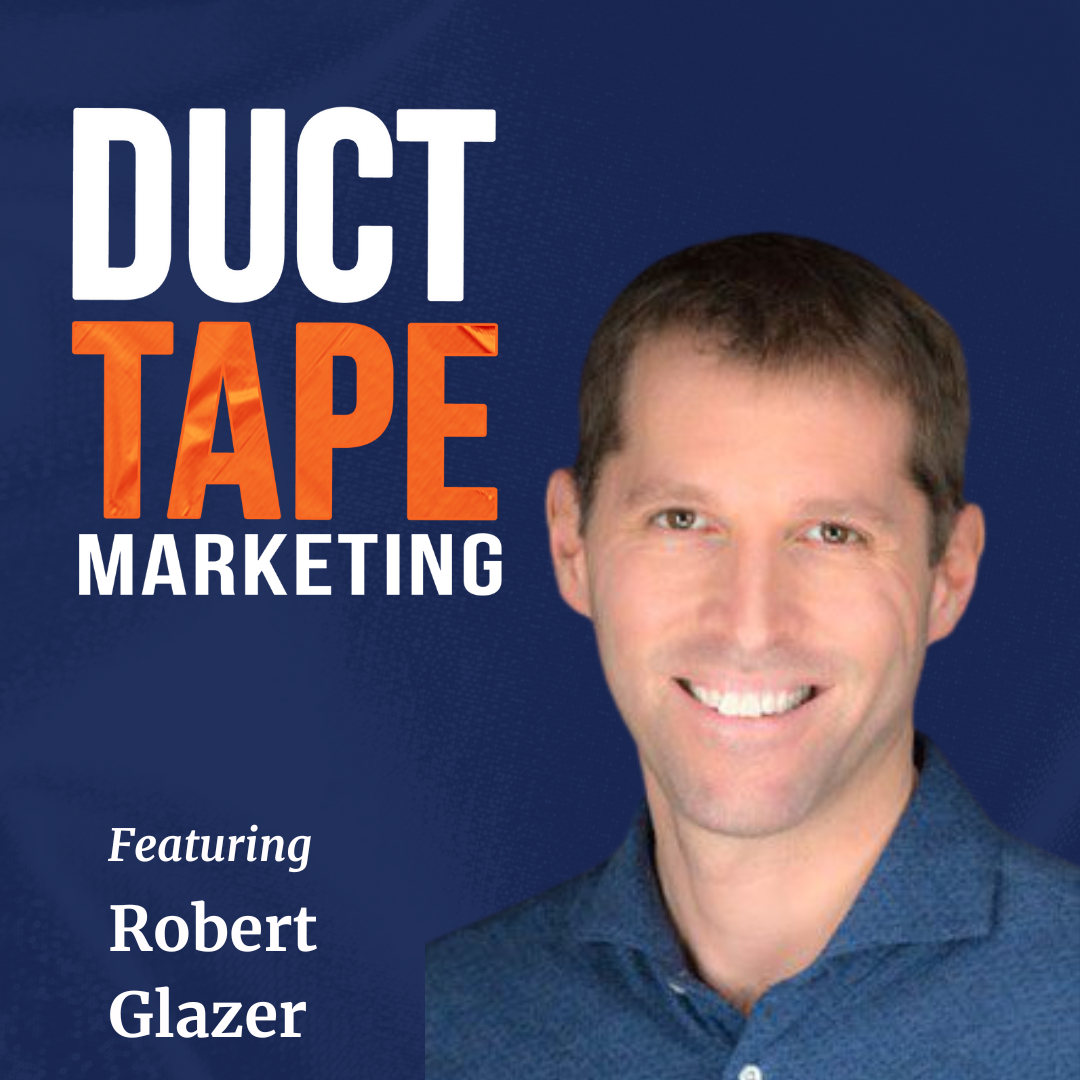 Overview
Overview Overview
Overview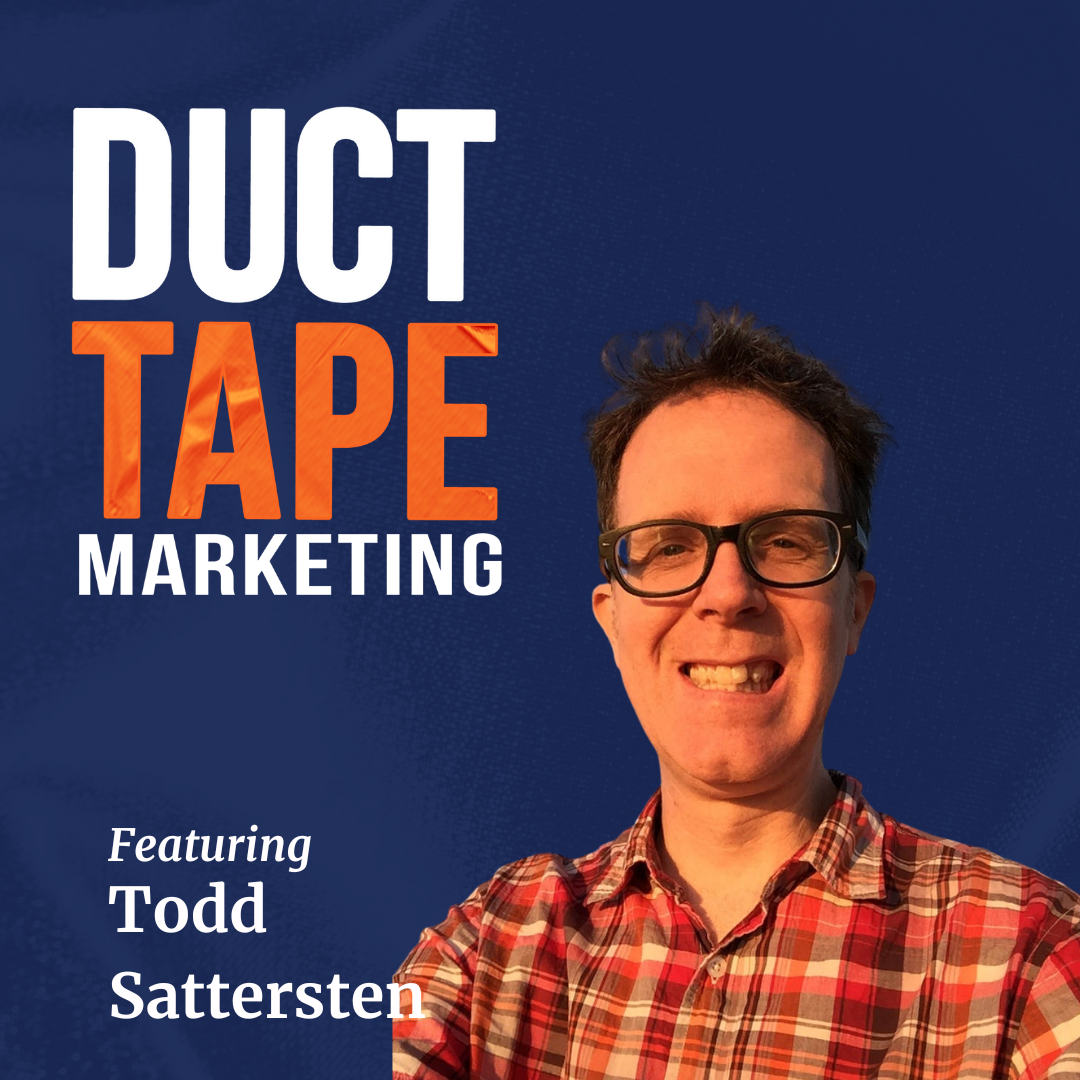 Overview
Overview Overview
Overview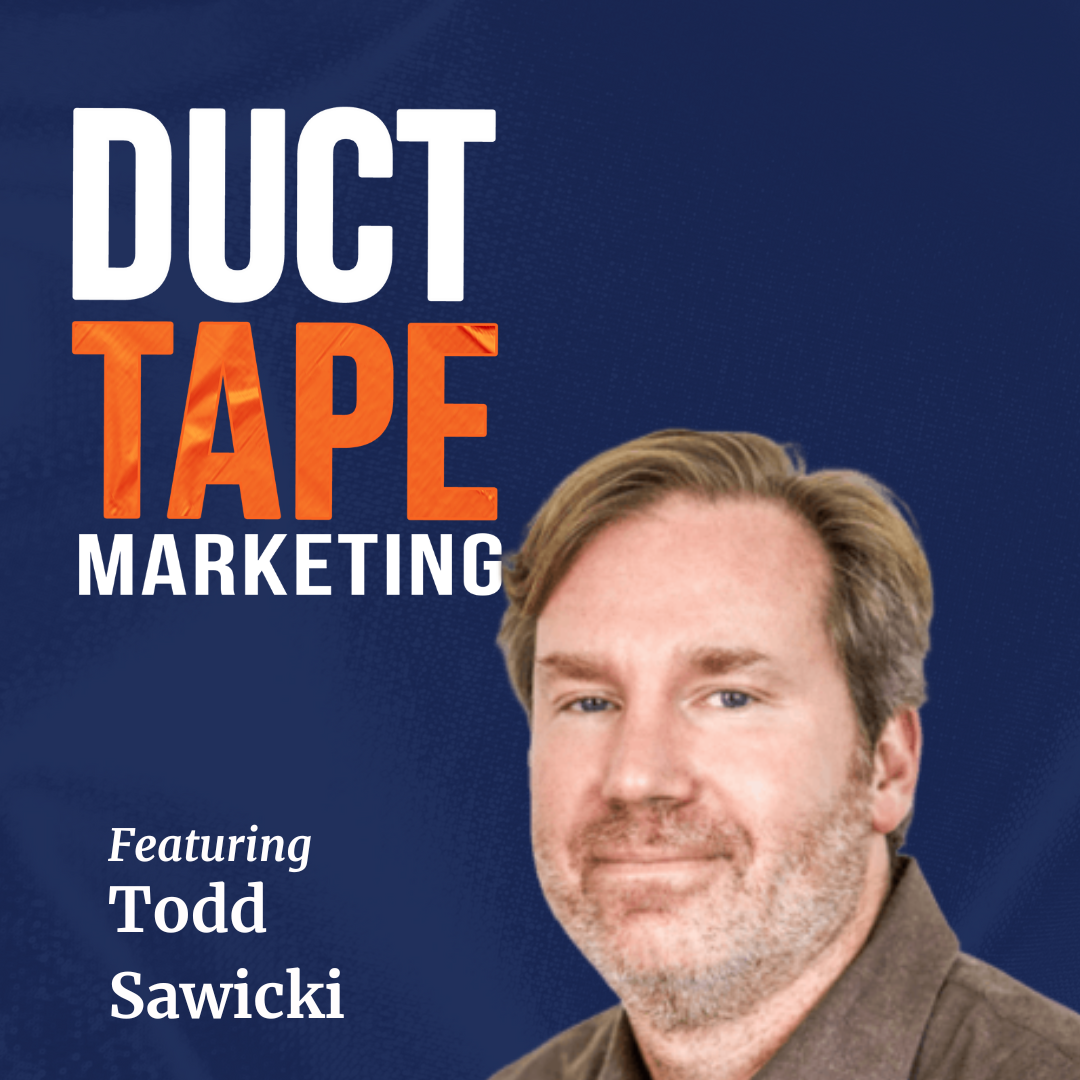 Overview
Overview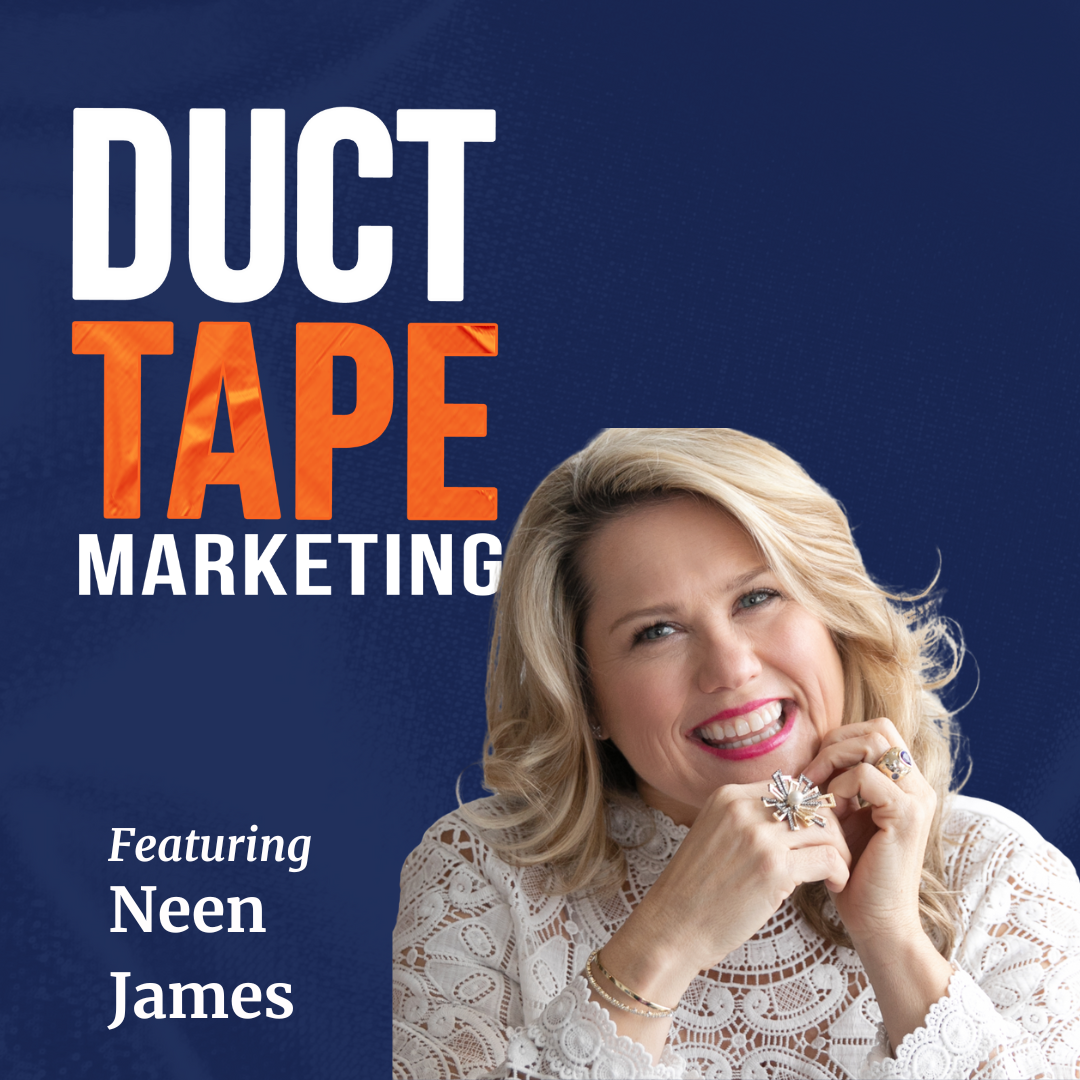 Overview
Overview